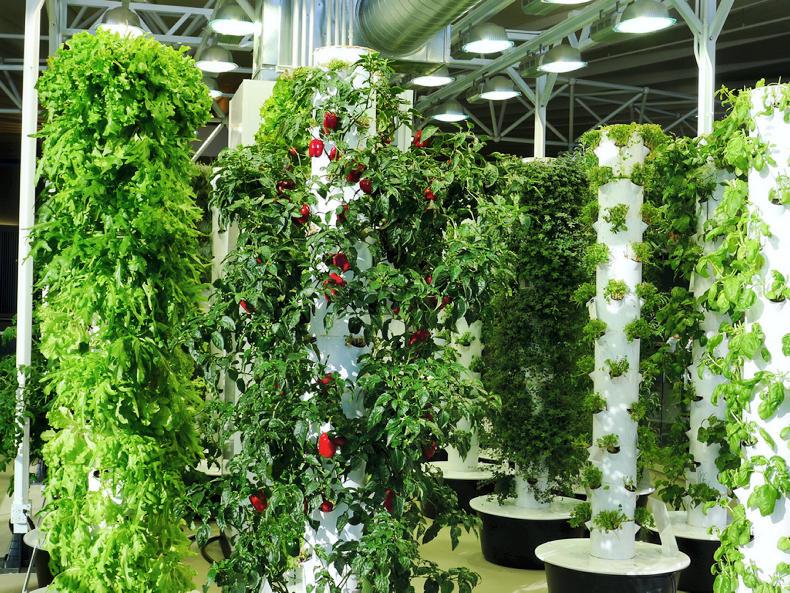According to the World Index, approximately 37% of the earth’s land is dedicated to agriculture, with 3% taken up by urban areas and a further 57% being deemed uninhabitable. This 37% figure is down from 40% since the mid-1990s. As we are all well aware, the population is predicted to grow by another three billion over the next 30 to 40 years, so in all likelihood the percentage of the earth’s surface that is being used for agriculture will drop even further.
So how do we feed this growing population off a smaller land base?
Well, it all boils down to one word: efficiency. To keep up with this growing population, the farmers of planet earth must be much more efficient with the way in which they produce food, growing more in a much smaller area.
In Ireland, 90% of our soils are deficient in at least one major area potassium (P), phosphorus (K)or pH, meaning this efficiency is far from being achieved. So in the meantime, producers must look elsewhere to try to obtain more produce from minimum area.
One solution to this problem is vertical farming.
This is defined as the practice of producing food and medicine in vertically stacked layers, vertically inclined surfaces and/or integrated in other structures (such as in a skyscraper, used warehouse, or shipping container).
As humans have being living in apartment structures since Roman times as a space-saving measure, many believe it is about time the food we consume is produced in a similar manner.
Vertical farming will be fully automated, with monitoring systems installed in each floor to detect plants’ needs for water, nutrients, light and all the other requirements for growth. It is more cost-effective to stick to quicker-growing crops that yield a high market value. Herbs, baby greens for salad and edible flowers are the most common crops to be grown.

Production per m2
The main advantage vertical farming enjoys over more conventional methods such as traditional farming and greenhouses is that it yields more crops per square metre. One indoor acre is equivalent to four to six outdoor acres or more, depending on the crop.
For strawberries, one indoor acre may produce yield equivalent to 30 acres. Dickson D Despommier, an emeritus professor of microbiology and public health at Columbia University, suggests that a building 30 storeys high with a basal area of 5ac (2.02ha) has the potential of producing crop yield equivalent to 2,400ac (971.2ha) of traditional horizontal farming.
Expressed in ratio, this means one high-rise farm is equal to 480 traditional horizontal farms.
Water conservation
Vertical farming technology uses less water than conventional agriculture. It uses aeroponic technology, which involves misting the roots of the plants, using an astonishing 95% less water than more conventional farming methods. According to David Rosenberg, CEO of AeroFarms: “Typically, in indoor growing, the roots sit in water, and one tries to oxygenate the water. Our key inventor realised that if we mist nutrition to the root structure, then the roots have a better oxygenation.”
No weather reliance
As all farmers are aware, the growing of crops is season-dependent, meaning there are only certain windows in the year where crops can be grown and even at that yields can be compromised, especially when there are unfavourable growing conditions.
However, vertical farming eliminates the reliance on weather. The use of led lighting and irrigation means that the right conditions are present 24/7 365 days a year and in theory, once the infrastructure is in place vertical farming can be carried out anywhere in the world, no matter what climatic conditions are present.
Distance to the market
Food miles are the distance food travels from where it is grown to where it is ultimately purchased or consumed. Food miles – and the resulting pollution – increase substantially when we consider produce imported from halfway around the world.
For example, imports by airplane have a substantial impact on global warming. In 2005, the import of fruits, nuts, and vegetables into California by airplane released more than 70,000t of CO2, which is equivalent to more than 12,000 cars on the road. This is eliminated by vertical farming as produce can be grown in cities, virtually on consumers’ doorsteps, thus eliminating the need for food transportation costs and the associated pollutants.
Fossil fuels
If fossil fuels are used to power the vertical farms, the net environmental effect may be in the negative.
It is possible that the traditional horizontal farms will burn less coal and contribute less to climatic change, so renewable energy sources must be used. There is an enormous requirement for energy in vertical farming. It is estimated that with 30 storeys, the supplemental light that needs to be supplied per square foot in every floor is 10 to 40 watts.
Property costs
If it becomes more widespread, the cost of obtaining a premises for growing plants will shoot up, leading to higher expenses, thus reducing the profitability of farming.
‘If you want to understand agriculture, go get yourself a passport’ - Connolly






 This is a subscriber-only article
This is a subscriber-only article










SHARING OPTIONS: